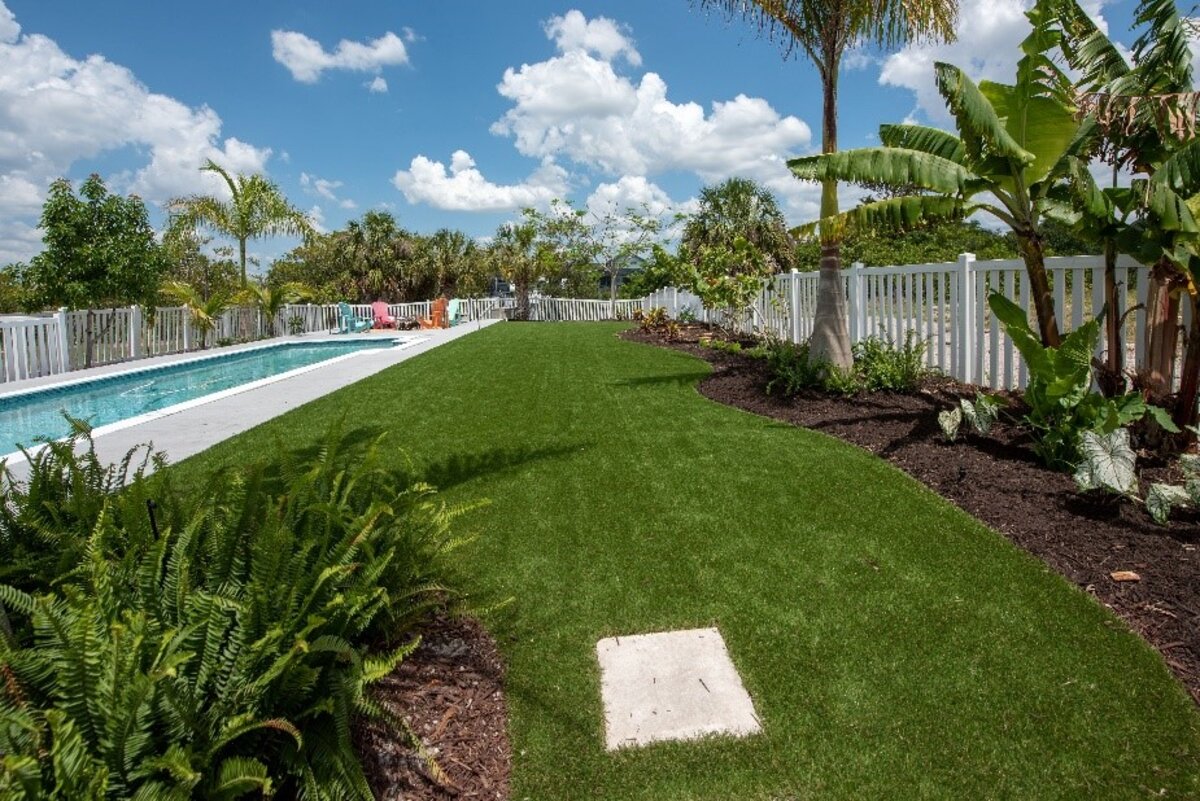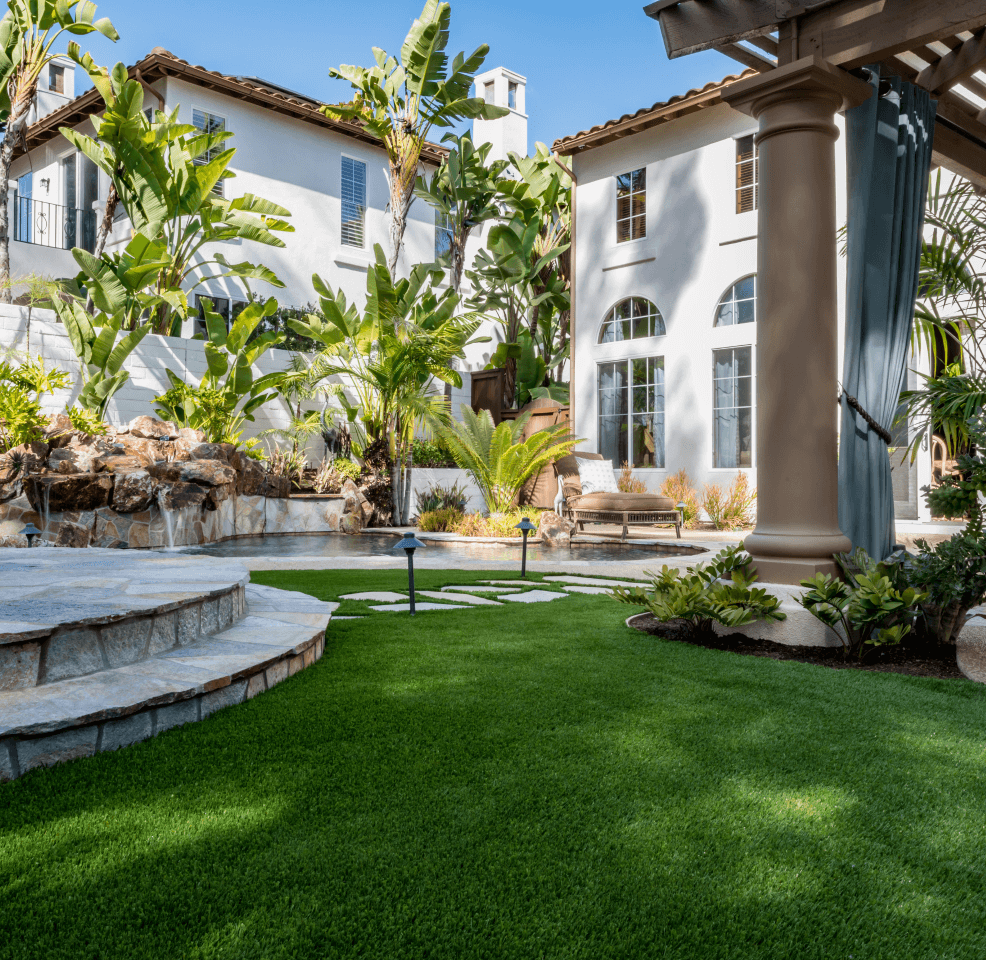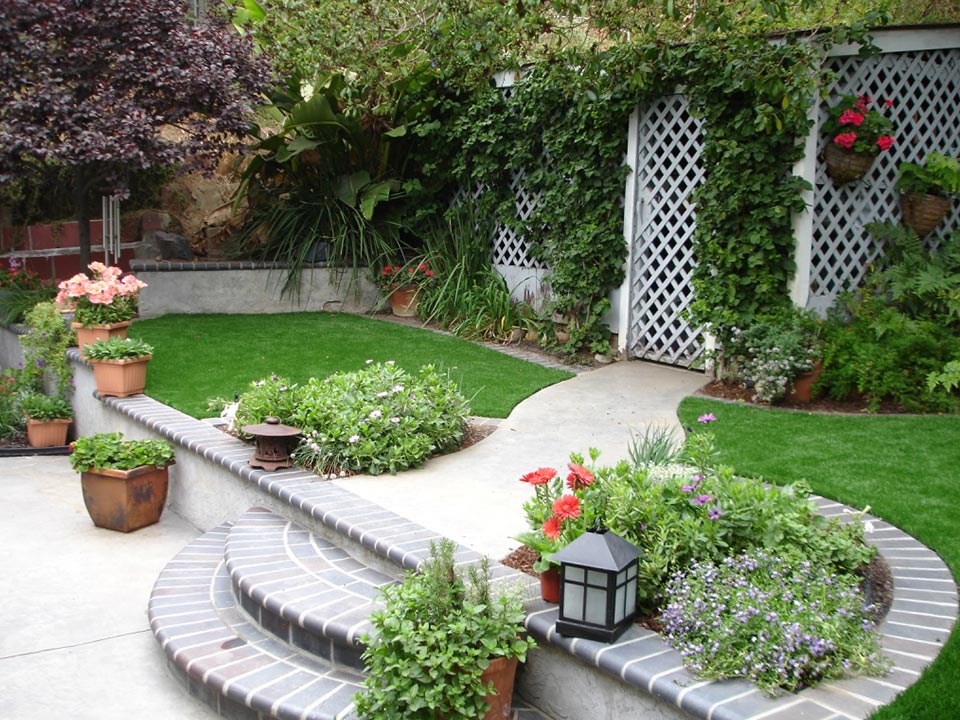When considering artificial turf for your outdoor space, it's essential to understand the factors that influence its cost structure. The price of artificial turf is influenced by several key elements, including the type of materials used, the quality of the turf, the size of the installation area, and the regional location. Let's delve into these factors in greater detail:

Artificial Turf Materials: Artificial turf comes in various types, ranging from economical options to premium varieties. The quality and appearance of the turf are significant factors in determining the price.

Economy Range: This category includes basic artificial turfs with shorter fibers and simpler features, costing approximately $5 to $10 per square foot. It's a suitable choice for those on a tighter budget or looking for low-maintenance solutions.
Mid-Range: These turfs offer a wider variety of options, better quality, and more realistic appearance, with prices ranging from $10 to $20 per square foot. They are popular choices for most residential installations.
Premium Range: High-end artificial turfs with advanced features, such as longer and softer fibers, superior drainage systems, and exceptional durability, fall into this category. Prices can range from $20 to $30+ per square foot. They are often used in professional sports fields and luxurious landscaping projects.

Installation Costs: The cost of installing artificial turf is influenced by various factors related to the project.
Project Scale: Larger installation areas require more labor and time, leading to higher installation costs.
Ground Conditions: If the area needs extensive leveling or preparation work, the installation cost may increase.
Regional Labor Costs: Labor expenses can vary based on the location of the installation, which impacts the overall installation expenses.
Additional Expenses: Apart from the basic materials and installation, there may be supplementary costs associated with the project.
Infill Material: Some artificial turfs require infill material, such as sand or rubber granules, to enhance stability and resilience. The cost of infill materials should be considered.
Accessories: Additional features like drainage systems or pet-friendly elements can add to the overall project cost.
Long-Term Savings: While the initial investment for artificial turf may be higher compared to natural grass, it's crucial to consider the long-term savings.
Low Maintenance: Artificial turf requires minimal maintenance, eliminating the need for mowing, watering, and fertilizing. This leads to significant cost savings on lawn care over time.
Water Conservation: Since artificial turf doesn't require irrigation, it helps conserve water, especially in regions with water scarcity.
Durability: High-quality artificial turf is designed to withstand heavy foot traffic and harsh weather conditions, ensuring a longer lifespan and reducing the need for replacements.
To obtain an accurate cost estimate for your specific project, it's recommended to consult reputable artificial turf suppliers and installers. They can assess your specific needs, provide personalized recommendations, and offer a detailed breakdown of the overall cost.
Ultimately, choosing the right type of artificial turf that aligns with your budget and requirements will create a stunning outdoor space and provide long-term value for your investment.
